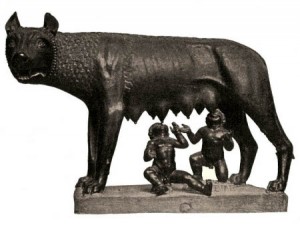March 20 or 21. Falls precisely on spring equinox.
Spring is here, friends. Let’s stay in the garden, and be guests to the strangers of the green…
— Rumi

Norooz is known by dozens of names across the many countries where it’s celebrated. Nowruz, Norouz, Noruz, Noroz, Nowroz, Nauryz, Navruz, Novroze, and more.
Now comes from the same root as “new”, and ruz means both “day” and “time”.
But however you spell it, the Persian New Year is one of the oldest holidays in the world. It dates back to the Zoroastrian religion, and the almost universal practice in the ancient world of welcoming the New Year with the beginning of spring. It’s celebrated on the spring equinox, usually March 21 in the Gregorian calendar, plus or minus a day.
During Esfand, the last month of the Persian calendar, houses are cleaned top to bottom. This original “spring cleaning” is called khane tekani, and stems from the Zoroastrian preoccupation for cleanliness, a virtue further emphasized in Islam and in Persian culture. [Note: You won’t find “cleanliness is next to godliness” in the Bible, but it’s imperative in the Qur’an.] Khane tekani includes house painting, washing the carpets and rugs, clearing out the attic, and cleaning the yard.
Family members are also measured for new clothes.
An essential feature of Nowruz is the “Sofreh-e Haft Sin”—Sofreh is a special table cloth which is spread out a few days prior to the New Year on the family table to hold the Haft Sin.
Haft means 7. But no, it’s not the Seven Sins (although one of the ‘Sin’s is an apple). In the Persian alphabet the letter S is called Sin, and the Haft Sin are items that begin with S and are placed on the table:
- Sabzeh (sabza): wheat, barley or lentil sprouts grown in a dish, to symbolize rebirth
- Seeb (sib): apples, for health and beauty
- Seer (sir): garlic cloves, symbolizing medicine
- Serkeh (serka): vinegar, representing both age and patience
- Samanu: a sweet reddish pudding made from wheat germ, specially prepared according to tradition by the women of the household, symbolizing affluence.
- Senjed: dried fruit of the oleaster, or lotus tree, symbolizing love. Rumor has it that the fragrant blossoms of the lotus tree make people fall in love.
- Somaq: sumac berries, symbolizing the color of sunrise, and the victory of good over evil

Sometimes additional S’s are added to the table, or used in place of one of the above.
- Sekka: newly minted coins, for prosperity and wealth
- Sepand: seeds of wild rue, which are burned in a small incense burner after the New Year to ward off evil spirits
- Sonbol: a fragrant hyacinth or narcissus flower, symbolizing the coming of spring.
Other common sights on the Nowruz table are:
- decorated eggs, symbolizing fertility. Easter eggs come from the Persian tradition, not the other way around.
- rose water, representing purification
- a bowl of water with an orange, symbolizing the earth floating in space
- candlesticks, one for each child in the family
- a mirror, to reflect creation, which is believed to have occurred on the first day of spring.
- and goldfish—in a fishbowl, not the little crackers. The goldfish symbolize life, as well as the constellation of Pisces, which the sun leaves as it enters the new year.
Nowruz is a cultural celebration rather than a religious one, but many families include the Qur’an on their Haft Sin table.
The traditions associated with Nowruz are far too numerous to describe here, but you can read about some of them at Norwuz Traditions – http://www.angelfire.com/rnb/bashiri/Nowruz/NowRuz.html.

♦ ♦ ♦
Come to the orchard in spring.
There is light and wine and sweethearts
in the pomegranate field.
If you do not come,
these do not matter.
If you do come,
these do not matter.Rumi
♦ ♦ ♦
This year President Obama made an unprecedented video message to people observing Nowruz in Iran and elsewhere:
“Today I want to extend my very best wishes to all who are celebrating Nowruz around the world. This holiday is both an ancient ritual and a moment of renewal, and I hope that you enjoy this special time of year with friends and family.”
What’s that? Not unprecedented? Nope, it turns out President Bush issued a similar greeting on March 20, 2003, though it was aimed at Iranians within the United States:
“During Nowruz, people of Iranian descent celebrate the arrival of spring, a season of rebirth. This joyous occasion provides an opportunity for Persians to cherish their rich heritage and enjoy the company of family and friends in anticipation of happiness and blessings in the year ahead.”
The March 20, 2003 announcement received far less play than Obama’s. A sign of bias in the liberal media? Perhaps. Or possibly because Bush’s Nowruz message fell on the exact same day as the invasion of Iraq.
















